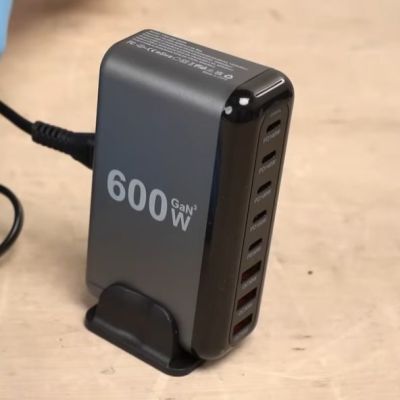The USB Charger That's Technically Honest
We've all seen scam USB chargers over the years - devices that get enthusiastically ripped apart by electrical engineers for their fire risks, massively overstated claims, and electrocution hazards. But the "600W" multi-port USB charger from AliExpress that [Denki Otaku] analyzed presents a fascinating case: despite only outputting 170 Watts before cutting out, it's technically not lying in its marketing and is generally well-engineered.

How the Marketing Trick Works
The clever part? The "600W" designation is effectively just the model name, even though it could easily be mistaken for the summed output power as listed on the ports. The claimed GaN components are actually present - all three claimed parts counted and verified in the main power conversion stages, delivering the expected efficiency gains.
Technical Performance and Limitations
During testing of USB-PD voltages and current on the USB-C ports, the supported USB-PD EPR wattage and voltages significantly decrease when multiple ports are used simultaneously. This indicates clear power sharing between ports - but crucially, this limitation is honestly listed on the product page.
The internal architecture reveals:
- Main PCB generates 28 VDC (the maximum voltage USB-C ports can output)
- Lower voltages generated as needed
- Step-down converters and USB-PD control chips on the port PCB
- Limited number of controllers dynamically adjust current per port as load increases
The Price vs Performance Reality
Considering this charger costs around $30 while a genuine 300 Watt charger from brands like Anker sells for $140+, it raises important questions about buyer expectations. Unlike outright scams like those outrageous $20 '2 TB' SSDs, this device seems to prey on consumers who lack technical understanding of what a genuine 600 Watt GaN multi-port USB charger would actually cost - not to mention how physically large such a unit would be.






Comments
Join Our Community
Sign up to share your thoughts, engage with others, and become part of our growing community.
No comments yet
Be the first to share your thoughts and start the conversation!